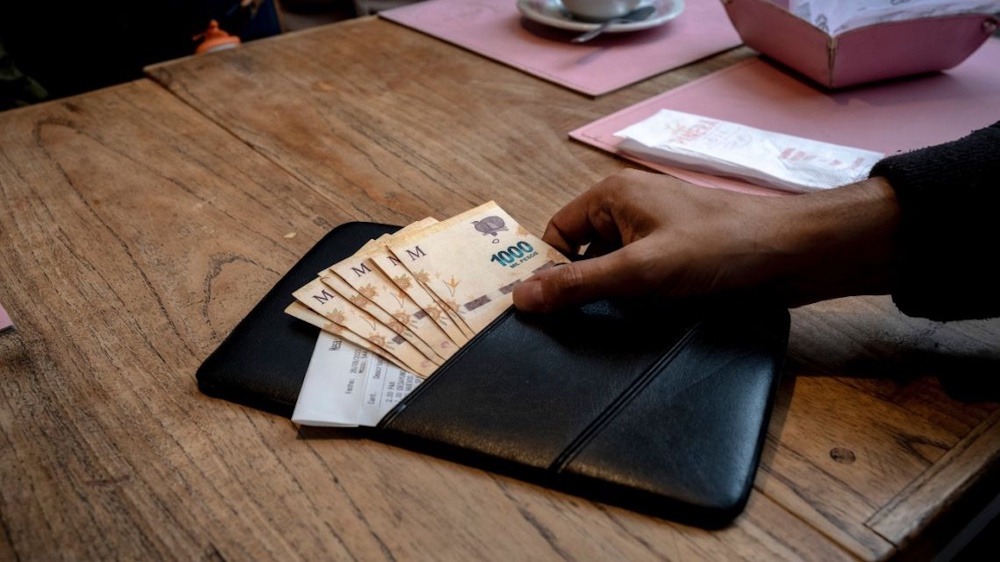As President Javier Milei implements stricter currency controls to stabilize the peso in anticipation of midterm elections, individuals such as Ruben López are increasingly resorting to cryptocurrencies as a means of safeguarding their savings. A new strategy entails the utilization of stablecoins — digital tokens linked one-to-one with the US dollar — to capitalize on Argentina’s official exchange rate, which presently assesses the peso approximately seven percent above the parallel market rate. The transaction proceeds as follows: acquire dollars and promptly exchange them for stablecoins. Subsequently, exchange those tokens for more affordable market-rate pesos. The arbitrage play, often referred to as a “rulo,” has the potential to generate a rapid profit of up to four percent per transaction, according to crypto brokers. “I make this trade every day,” stated López.
The cryptocurrency maneuver illustrates a change in the strategies employed by Argentines as they navigate yet another phase of economic distress. The nation has been depleting its dollar reserves to strengthen the peso and avert a violation of its trading band in anticipation of the October 26 vote. Following this event, investors anticipate a further decline in the currency, despite significant support from the United States. When Argentina’s Central Bank recently prohibited individuals from reselling dollars for 90 days – a measure aimed at curtailing rapid-profit transactions – the “rulo” appeared almost immediately. On October 9, trading platform Ripio reported a 40 percent weekly increase in stablecoin-to-peso sales, attributing this rise to users capitalizing on price fluctuations and market opportunities. A segment of the population recognizes the necessity of implementing such measures, particularly given that the nation has experienced three instances of debt default within this century. Milei was elected in 2023 with a mandate to address the prevailing financial challenges. He has achieved certain successes, such as reducing annual inflation to approximately 30 percent from nearly 300 percent.
However, the currency has depreciated by about three-quarters of its value, a consequence of Milei’s own devaluation upon assuming office, and more recently, due to investor concerns regarding the forthcoming elections. The rulo illustrates the transformation of cryptocurrency from a mere curiosity that captivated Argentines, including Milei himself, to a financial instrument employed by residents to safeguard their savings. In the United States, cryptocurrency frequently serves as a vehicle for speculation; however, in Latin America, it has evolved into a means of stability. In countries such as Argentina, Venezuela, and Bolivia, technology serves as an alternative route to navigate currency fluctuations, elevated inflation rates, and stringent capital restrictions. “We provide users with the opportunity to purchase cryptocurrency using pesos or dollars and sell them for a profit – this is our core business,” stated Manuel Beaudroit. “This can clearly facilitate a substantial profit owing to the disparity in exchange rates.” In recent weeks, Beaudroit noted that traders could achieve returns of three percent to four percent per trade; however, he emphasized that “this is highly unusual.” Other exchanges are exhibiting analogous trends. Lemon Cash, a local platform, reported that total crypto operations—including sales, purchases, and swaps—increased by 50 percent above average on October 1, coinciding with the implementation of the Central Bank’s 90-day ban.
“Stablecoins are undoubtedly a vehicle to get cheaper dollars,” stated Julián Colombo. “Crypto remains in the regulatory pipeline, leaving the government uncertain about how to manage it or limit liquidity in stablecoins, which has facilitated this phenomenon.” However, the increase in stablecoin transactions extends beyond mere arbitrage activities. As Milei’s administration approaches a crucial electoral juncture, the economy is once more experiencing significant pressure, prompting a considerable number of Argentines to utilize cryptocurrency as a safeguard against a potential devaluation of the peso. “Inflation and political uncertainty compel a more cautious approach, leading me to refrain from holding savings or investments in pesos; I solely utilize them for expenses,” stated Nicole Connor, leader of Argentina’s Women in Crypto organisation. “I maintain my savings in cryptocurrencies and stablecoins while seeking to generate returns from these assets.” Nonetheless, the cryptocurrency market is not devoid of risks. While trading on the stock market is free from taxation, profits derived from cryptocurrency transactions are subject to a tax of up to 15 percent. Frequent trading activities may attract the attention of financial institutions, which typically require verification of funds from individuals engaging in numerous substantial transfers. As economic challenges persist, analysts indicate that Argentina’s dependence on digital dollars may intensify, as individuals throughout Latin America seek to protect their assets from fiscal and electoral uncertainties. “Stablecoins are here to stay,” stated López. “The dollar holds a significant position in Argentine society and daily life as it has provided a safe haven from the national currency.”

